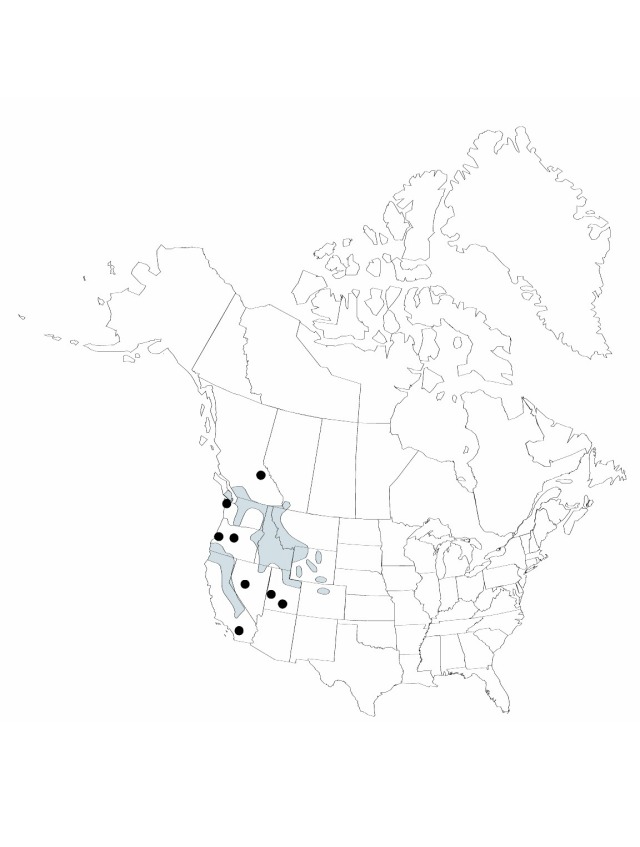Juncus parryi
Trans. Acad. Sci. St. Louis 2: 446. 1866.
Herbs, perennial, strongly tufted, 0.5–3 dm. Rhizomes densely short-branched. Culms terete. Cataphylls several. Leaves: auricles 0.2–0.3 mm, apex acute to rounded, scarious. Inflorescences 1–3-flowered, open; primary bract terete, 2–4 cm, usually longer than inflorescence. Flowers pedicellate; bracteoles broadly ovate; tepals light brown with green midstripe, lanceolate, 5.5–9 mm, margins scarious; inner series loosely subtending capsule at maturity, shorter; stamens 6, filaments 0.7–1 mm, anthers 1.1–1.6 mm; style 0.2 mm. Capsules tan, 3-locular, narrowly oblong, 6–9 × 1.5–2 mm, usually exceeding perianth. Seeds amber, body 0.6 mm, tails 0.4 mm.
Phenology: Flowering and fruiting summer.
Habitat: Exposed rocky slopes and stream banks in montane and alpine areas, conifer forests
Elevation: 1500–4000 m
Distribution

Alta., B.C., Calif., Colo., Idaho, Mont., Nev., Oreg., Utah, Wash., Wyo.
Discussion
Selected References
None.